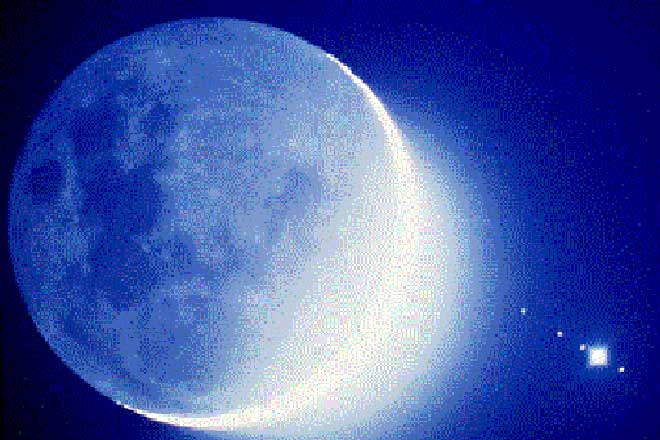Data from a NASA radar aboard India's Chandrayaan -1 spacecraft discovered evidence of ice deposits on the moon, the Indian Space Research Organization (ISRO) said Tuesday.
NASA's Miniature Synthetic Aperture Radar (Mini-SAR) found more than 40 small craters of 2-to-15-kilometre diameters with sub-surface water ice at their base, an ISRO statement said, dpa reported.
The lightweight imaging radar was one of 11 instruments carried by Chandrayaan -1 on its moon mission in October 2008. Chandrayaan in Hindi means moon vehicle.
The moon mission ended in August 2009, short of the originally scheduled two years, after Chandrayaan -1 stopped sending radio signals. According to ISRO, the mission achieved 95 per cent of its planned objectives.
The Mini -SAR mapped the moon's permanently shadowed polar craters that are not visible from earth, the statement said. The results showed deposits having radar characteristics similar to ice.
"The emerging picture from the multiple measurements and resulting data of the instruments, Moon Mineralogy Mapper and Mini -SAR on Chandrayaan-1 and NASA's Lunar Crater Observation and Sensing Satellite, indicates that water creation, migration, deposition and retention are occurring on the moon," Paul Spudis, chief investigator of the radar experiment at the Lunar and Planetary Institute in Houston, was quoted as saying.
"The new discoveries show the moon is an even more interesting and attractive scientific, exploration and operational destination than people had previously thought."
"After analysing the data, our science team determined a strong indication of water ice, a finding which will give future missions a new target to further explore and exploit," Jason Crusan, programme executive at NASA's Space Operations Mission Directorate in Washington said.
The Mini -SAR's findings have been published in the Geophysical Research Letters journal. The article was authored by scientists from 13 agencies of the US and India.
NASA radar on India's Chandrayaan-I finds ice on the moon
Data from a NASA radar aboard India's Chandrayaan -1 spacecraft discovered evidence of ice deposits on the moon, the Indian Space Research Organization (ISRO) said Tuesday.






